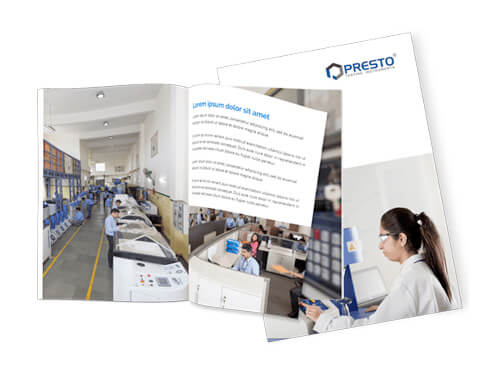Optimize the Shipping Reliability of Boxes with the Box Compression Strength Tester

Gaurav Malhotra
With the modern age and the exposure of people to international markets, the number of shipments & procedures has also increased. In earlier times before technology made an impact of connecting people from different parts of the world, trades used to take place for only necessary goods like textiles, food, arms, etc. However, with the increasing exposure to international markets, the need & demand of consumers for shipping products from one place to another has increased drastically. The brands make sure that after the manufacturing process, these products remain up to the mark as there are numerous instances when they have to travel a long journey before reaching the end consumer. These products are majorly packed within the corrugated boxes due to their ability to withstand impacts and affordable availability as well as accessibility all around the globe. However, these corrugated boxes undergo rigorous storage & transit measures as the shipment operators try to fit in maximum cargo within minimal space due to which these corrugated boxes are stacked together. The stacking process can take a toll on the durability of these boxes and can result in hampering the outer body by damage due to the overweight of the boxes stacked above. This might lead to huge losses incurred by the manufacturer of the product packed within these boxes or it can lead to several other jeopardies as there are instances when sensitive, flammable as well as perishable items are packed. To avoid such hassles and jeopardies, manufacturers assess the compression strength of corrugated before it is consumed in the shipment process by the shippers or shipment operators. The Presto Group offers a helping hand to manufacturers in the form of the box compression strength tester. The lab testing instrument is designed to replicate the hazards that a corrugated box undergoes during stacking for minimal space acquaintance. The instrument is used by manufacturers all across the globe due to its pinpoint accuracy. Let us take a look at how the instrument operates and reaches such high accuracy levels consistently. Operating Procedure of the Box Compression Strength Tester To conduct the box compression strength test, it is highly necessary to make sure that the specimen being used does not exceed the size of the compression plate as well as the specimen placement platform. The operator can initiate the test by placing the specimen between the carved-out labels on the specimen placement platform allowing the operator to reach high levels of accuracy and perform the test with absolute precision. After placing the specimen, the operator can turn the instrument on with the help of the rotary switch on the control panel. The compression plate of the instrument starts moving downward at a speed of 12.5 mm per minute with a force of 500 KgF – 1500 KgF (as per the size). The compression plate's downward movement reaches the corrugated box's top. The instrument now forces pressure on the corrugated box and it withstands pressure as per its durability or stacking resilience. After withstanding the maximum stacking force imitated by the compression plate, the specimen after withstanding the maximum force exerted in the form of compression, deforms and loses its original state. The peak value that the corrugated box could withstand before losing its original shape and getting damaged by the compression force exerted onto it with the compression plate. The microprocessor-based digital display of the instrument associated with the control panel indicates the maximum value of force that the specimen was able to withstand before getting deformed. The digital display also indicates the deformation that took place due to the constant undergoing of the compression plate. The working of the instrument and recording of results become a lot easier as the instrument is instilled with top-quality characteristics that simplify testing, enhancing the testing experience as well. High-End Attributes of the Box Compression Strength Tester The box compression tester manufacturer is enriched with so many features that contribute towards the smooth functioning of the instrument along with certain ASTM standard compliance which elevates the trust levels of manufacturers. The most eminent feature of the box compression machine is the inculcation of the lead screw for the movement of the compression plate in a linear motion with a load cell that supports up to 1500 KgF of load (depending upon the model). Another top-end feature of the box compression machine is the carved-out labels at the sample placement plate or platform that allow the operator to keep the specimen perfectly performing testing with maximum precision and achieve higher levels of accuracy. The instrument is also offered with high-end microprocessor–based digital displays that indicate both the peak value before getting deformed and the maximum deformation that takes place due to the force applied to the specimen. One of the most widely appreciated features by manufacturers is the incorporation of the limit & safety switches that restrict the compression plate from over-compressing the specimen which can lead to hazards & damage to the sample placement platform. The Box compression tester manufacturer has built the instrument with mild steel majorly running across the body with a layering of powder-coated paint. Allowing the instrument to stay parallel to the anti-corrosive properties and disallow rusting for a longer duration of time. Along with mild steel material and powder-coated paint, the instrument looks visually aesthetic as well due to the blue & gray classic Presto color combination used on the instrument. Get Yourself the Box Compression Strength Tester Right Now! To make sure that the corrugated boxes are resilient enough and can withstand stacking as well as other storage or transit measures, you can get your hands on the top-notch box compression testing machine.
you may also like
- The Ultimate Guide to Universal Testing Machines (UTM)
- Guide to Bursting Strength Tester: Working, Benefits & Price
- Ultimate Guide to Melt Flow Index Tester: Operations, Advantages, and Uses
- A Complete Guide to Box Compression Tester: Methods & Applications
- Hot air oven not working? Common problems & fixing issues
Recent News
- Paper & Packaging Testing Instruments
- Paint, Plating & Coating Testing Instruments
- Plastic & Polymer Testing Instruments
- Environmental Testing Chambers
- PET & Preform Testing Instruments
- Color Measuring Testing Instruments
- View Entire Range Instruments

Catalogue 2023
Get information about new product launches, research, innovation and endeavors at Presto.
download Free Copy
Get a Quote

